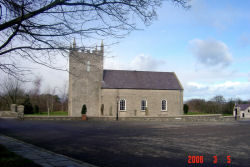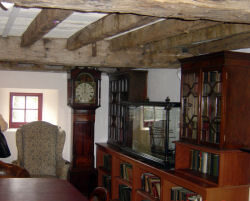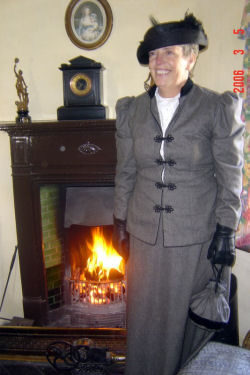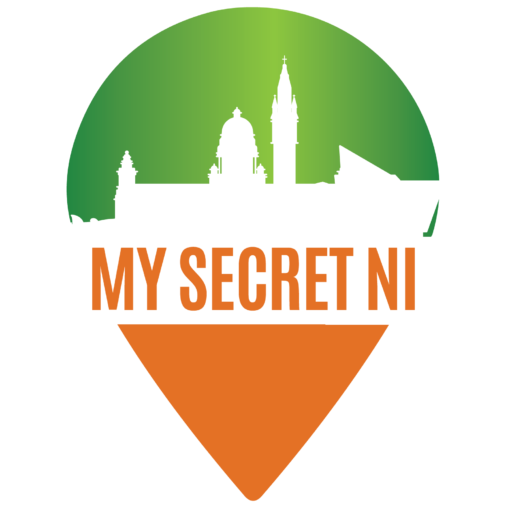What is the Ulster folk and transport museum and Where it is
Northern Ireland has several museums, but the Folk and Transport Museum. is one of the most enticing ones and great to teach children how was life in the not-so-distant past.
They are actually two museums located close to each other. This page will cover the Folk Museum spread over 170 acres and is complete with a church, bank, police station, school and plenty of houses.
You can buy tickets for the Folk Museum alone, or for the Folk and Transport combined, thus saving you some money.
Located east of Belfast on the A2 they are easily reachable by car or train through the Cultra station.
Do make sure to watch our slideshow at the end of the page.
One Museum, Three Parts
The Museum is divided into three parts:
- The Folk Galleries give you a view into Northern Ireland’s history through imaginative and informative displays.
Ulster Folk and Transport Museum
Our Visit to the Ballycultra open air museum
We visited on a windy cold spring day. The “windy cold” part of the visit meant that there were few people around so we hand plenty of space and time to visit the exhibits.
On the other hand, it made the visit somewhat more challenging. Since the Folk Museum is essentially open air, much of the time is spent outdoors walking from house to house to church to other buildings.
If you are well dressed for the weather and in the company of adults you may cope well; but if you have little children with you (like we did) they are more likely to feel cold and tired and complain. So pick a sunny day to visit the Ulster Folk Museum and Transport Museum.

The Galleries and The sweet shop.
Cold weather aside, we thoroughly enjoyed our visit to the Ulster Folk and Transport Museum. The Galleries are very informative and depending how much of an interest you take in social history you can easily spend there as long as two hours.
The little corner shop had a lady in 19th century costume selling old-fashioned sweets from big, glass containers of the past century. There were antique postcards for sale too.
Get some money with you, you don’t buy “hundred years old” sweets everyday!
 The Old Church
The Old Church
In the outdoor Ballycultra town itself, one of the more interesting exhibits is the old church, an eye opener concerning the norms of days gone by were some people were more equal than others.
The church had regular pews for the common mortals and special spacious and more comfortable cubicles for the families of those who could afford to pay a hefty rent for them.
The Police Station and School
The Police station had some fascinating information about the type of offenses it dealt with 150 years ago.
The school with desks full of messages and love notes written by the students; not much has changed! In a corner, hoops and skipping ropes await the children of the old. In the wall, an old map of Europe and a blackboard that have heard hundreds of little voices reciting their times tables.

The Houses and cottages of the Ulster Folk and Transport Museum.
You can enter the adobes and get an idea how people lived without the amenities we enjoy today.
The little cottages of the poor people are almost bare. The big houses of the rich townspeople however, are lovely furnished with crochet coverings on antique beds, and even a butterfly and embalmed bird collection.
The children enjoyed looking at the old-fashioned toys and the lovely baby cribs of the past. They even tried playing the old organ. It was hard to pump air with the foot pump while concentrating on notes reading. At they end, they declared they liked their house the best!
Visit and you too, will suddenly feel more appreciative of the house you live in.
 A House with a Landlady
A House with a Landlady
In one of the houses, ladies dressed in 19th century attire go about doing household work. The fireplace is burning and it bids us linger a bit longer.
We begin chatting and they explain some of the traditional work that would be taking place in such homes on a daily basis. Simple things like preparing a meal required much work while washing up in the cold weather was certainly not the most pleasant of chores.
Yet, the furniture looks so rustic and attractive. Nowadays you would pay a small fortune to have your home furnished in such a way.
Care for a Snack?
We say goodbye to the kind ladies and exit the house with the fireplace. The cold feels even colder now so we decide to skip the rural area of the Ulster Folk and Transport Museum, much as we would have liked to see it. The children are getting tired so it is probably time to eat. Had it been a gorgeous, sunny day, the dedicated picnic areas would be well used.
On a cold day, however, the tearooms look particularly inviting. Gilford Tearoom in the reconstituted village offers hot and cold drinks and snacks.
If you want something more elaborate you can try the Cultra Manor. In our case, the Gilford Tearoom was not yet opened and Cultra Manor was having a carvery day (every Sunday between 12:30-3:00) for which you are advised to prebook. Being vegeterians we decided to skip the carvery. Instead, we drove off the museum, picked something on one of the malls nearby and then headed back for the mostly indoor Transport Museum.
All in all we have spent more than two hours in the Folk Museum and loved it. Had the weather been warmer or had our young children not been getting tired and cold we could have easily spent twice as long.
Plan your visit to the Ulster Folk Museum and Transport Museum well, and you are sure to enjoy!

